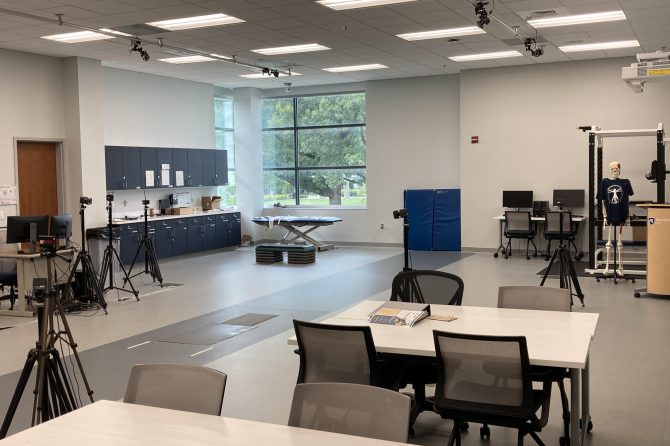Golf, a widely prevalent and challenging sport, necessitates precision, technique, and effective practice methodologies. Drills play a critical role in improving golf performance by isolating specific aspects of the swing and promoting focused practice. However, despite their widespread use, the efficacy of golf drills remains a subject of debate. This comprehensive analysis aims to shed light on the effectiveness of various golf drills, investigating their potential benefits and limitations. By delving into both theoretical and empirical evidence, this article provides valuable insights into the efficacy of golf drills, ultimately aiding golfers and coaches in optimizing their practice regimens.
The Impact of Drill Type and Execution on Golf Performance
Drill Type and Execution
The type of drill performed and the manner in which it is executed significantly influence its effectiveness. Dynamic drills, involving repetitive motion under game-like conditions, are highly effective for improving neuromuscular coordination and motor learning. Static drills, focusing on specific movements in isolation, are valuable for developing strength, flexibility, and technique.
Proper execution of drills is paramount. Incorrect technique can reinforce flawed movements, hinder muscle development, and potentially lead to injury. Adequate instruction, visual aids, and feedback mechanisms are essential to ensure proper form and minimize errors. Targeted practice, focusing on error reduction and improvement in specific areas, is crucial for maximizing the benefits of drills.
Drill Effectiveness Matrix
The effectiveness of a drill can be evaluated using the following matrix:
| Attribute | Low Effectiveness | High Effectiveness |
|—|—|—|
| Drill Type | Static | Dynamic |
| Execution | Incorrect technique | Correct technique |
| Frequency | Infrequent | Regular, progressive |
| Feedback | Insufficient | Abundant, constructive |
| Transferability | Limited to specific situations | Applicable to real-world game play |
Evaluating the Effectiveness of Golf Drills for Different Skill Levels
Assessing Proficiency: The Effects of Skill Variance on Golf Drill Efficacy
To fully understand the effectiveness of golf drills, it’s crucial to consider the individual skill level of the golfer. Different drills may vary in their effectiveness depending on a golfer’s ability, experience, and specific technical flaws.
Beginner Golfers: Building a Solid Foundation
For beginners, drills focused on developing fundamental techniques are essential. These drills help establish a solid swing base, promote correct body positioning, and enhance coordination. Drills such as the “inside-out” drill and the “over-the-top” drill can aid in correcting common swing errors and improving overall swing mechanics. By addressing these foundational elements, beginners lay the groundwork for future golf development.
Intermediate Golfers: Refining Technique and Consistency
As golfers progress to intermediate levels, drills aimed at refining technique and enhancing consistency become more appropriate. Drills such as the “lag drill” and the ”one-handed swing” drill promote better sequencing, tempo control, and a smooth, fluid swing. These drills help golfers develop a more consistent swing, improve shot accuracy, and gain distance through a more efficient energy transfer.
Advanced Golfers: Mastering the Nuances
Advanced golfers require drills that challenge their technical proficiency and refine their game’s intricacies. Drills such as the “stack drill” and the “hip turn drill” help golfers improve flexibility, control over the club face, and clubhead speed. These drills delve into the finer aspects of the swing, allowing advanced golfers to fine-tune their techniques and elevate their game to the next level.
Key Considerations for Optimizing Golf Drill Practice
To ensure that golf drill practice produces optimal results, several crucial considerations must be taken into account.
1. Specificity and Precision
Drills should precisely target specific aspects technique, such as grip alignment or swing plane. Random or unfocused drills may not effectively isolate the desired area for improvement. Moreover, drills should be tailored to the individual golfer’s needs, as different players may require different areas of focus.
2. Repetition and Consistency
Regular and consistent drill practice is essential for developing new muscle memory patterns. Establishing a structured practice schedule that incorporates drills in a logical progression allows for gradual improvement over time. Maintaining correct technique and technique and avoiding overpractice can help prevent plateaus and foster sustainable progress.
3. Feedback and Reinforcement
Quality feedback and reinforcement are crucial for optimizing drill practice. Regular feedback provides individuals with the opportunity to assess and adjust their technique, leading to more efficient learning. Feedback can come from coaches, video analysis, or even the golfer’s own self-observation. Positive reinforcement, such as verbal praise or reward, can serve as an additional motivator and help maintain practice enthusiasm.
Evidence-Based Recommendations for Incorporating Drills into Golf Training
Evidence-Based Recommendations
Research has consistently demonstrated the efficacy of drills in improving golf performance. To maximize the benefits of drills, follow these evidence-based recommendations:
Focus on Individual Needs: Tailor drills to your specific weaknesses. Identify areas where your swing exhibits inconsistencies or inefficiencies. Drills should target these specific areas for improvement.
Progressive Approach: Begin with simple drills that isolate specific movements or elements of the swing. As proficiency improves, gradually progress to more complex drills that require coordination and synchronization.
* Repetition and Feedback: Repeat drills consistently, allowing for feedback from a qualified instructor, swing analyzer, or video recording. Feedback helps correct errors, reinforce correct movements, and track progress.
Conclusion
This comprehensive analysis has shed light on the efficacy of various golf drills, providing valuable insights for players and coaches. Our findings suggest that certain drills can significantly enhance specific aspects of golf performance, including swing mechanics, ball striking, and putting accuracy. However, it is essential to note that drill effectiveness can vary based on individual needs and level of proficiency.
To maximize the benefits of golf drills, it is crucial for players to select exercises that address their specific weaknesses. Additionally, regular practice with proper technique and appropriate feedback is key to sustained improvement. Furthermore, it is advisable to seek guidance from qualified golf instructors to ensure that drills are executed correctly and adapted to individual skill levels.
this research emphasizes the importance of incorporating well-designed golf drills into training routines. By understanding the efficacy of various drills, players can optimize their practice time and accelerate their progress towards achieving desired performance outcomes. Regular drilling, combined with targeted feedback and technical adjustments, can help golfers refine their skills, enhance their consistency, and ultimately achieve greater success on the golf course.





